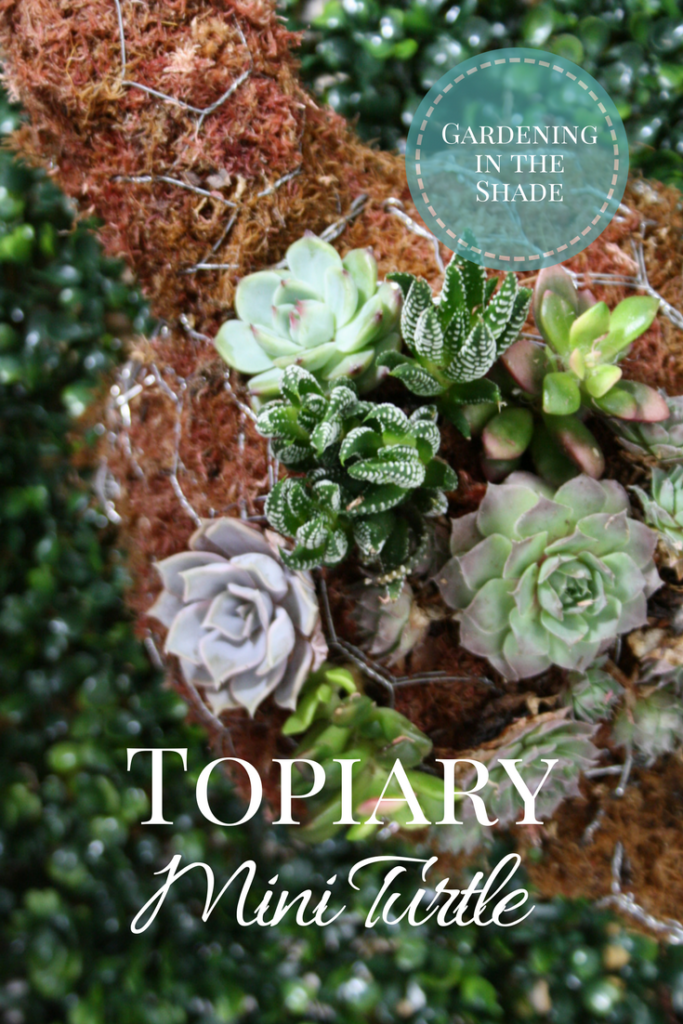
I decided it was time for a topiary mini turtle. Fred, my other turtle, is adorable, but just a little to big for the house. And what better project to launch my new craft space? Let me tell you, having a designated spot to work on my projects is a dream! I was able to take my time with this little guy, knowing I wouldn’t have to tidy up part way through so I could use my kitchen table as a table.
If you’re reading this, I hope you won’t think making topiary is hard. It’s mainly just twisting wire, and anyone can do that! That said, just a couple of cautions. Chicken wire is stabby, in fact all wire is. When you are forming your topiary, twist all of your sharp ends towards the inside where the moss will cover them. Be sure to clean up all the little bits of wire after, nobody enjoys pulling a piece of wire out of their foot. Never place your finished topiary directly on furnishing. His feet are scratchy, sometimes they’re wet too.
Please note, some of the links below are affiliate links. If you make a purchase through these links, this site earns a small commission at no extra cost to you.
Mini Turtle – what you’ll need.
- Snips, Pliers and wire cutters. I’ve been using my snips to cut the wire, they are easier to use and less flying bits to worry about.
- A basin or pail of water to soak your moss.
- Chicken wire.
- Galvanized wire in a heavy enough gauge to hold its shape but still bend.
- Florist wire.
- Sphagnum moss. Look for one used for growing orchids.
- Plants. I used succulents again, but I would love to make one of these and use mini Hosta. Ivy would work too.
Let’s get started!
Place your moss in a bucket of water to soak.
For the shell:
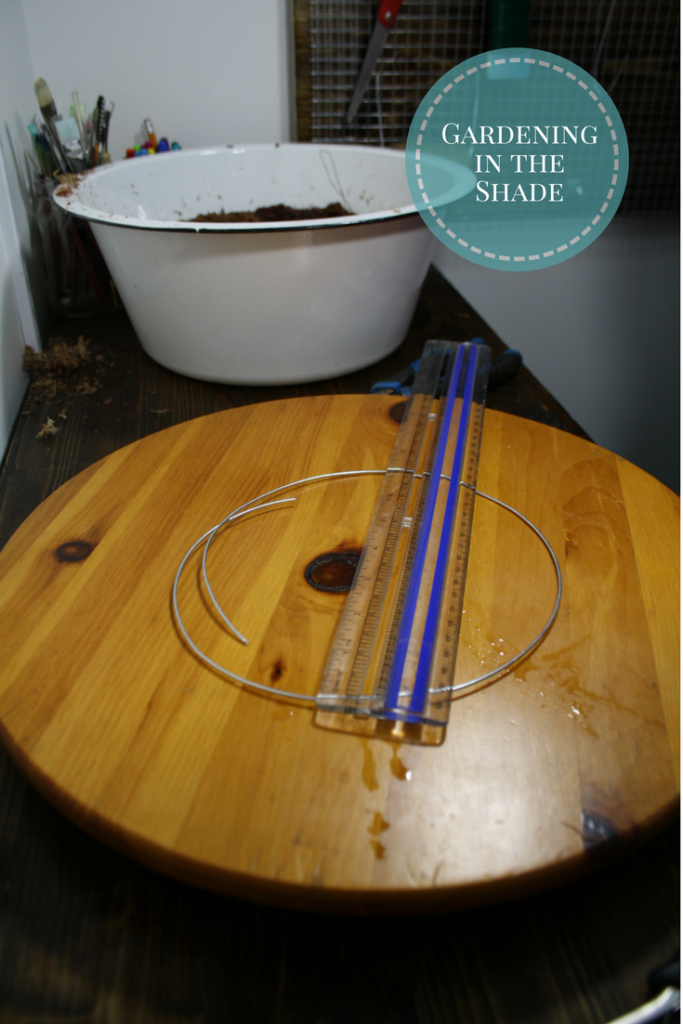
From the heavier wire, cut a piece long enough to make a circle 7″ across with a bit of overlap. This will be the rim of your turtle’s shell.
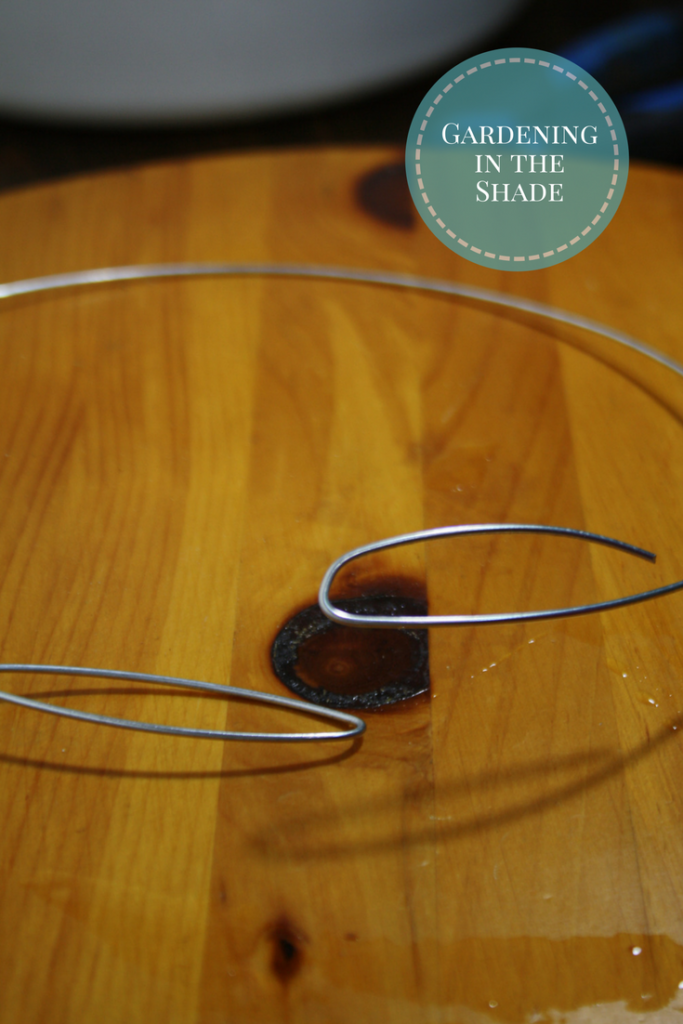
Fold back each end to make a hook, join together and twist tightly.
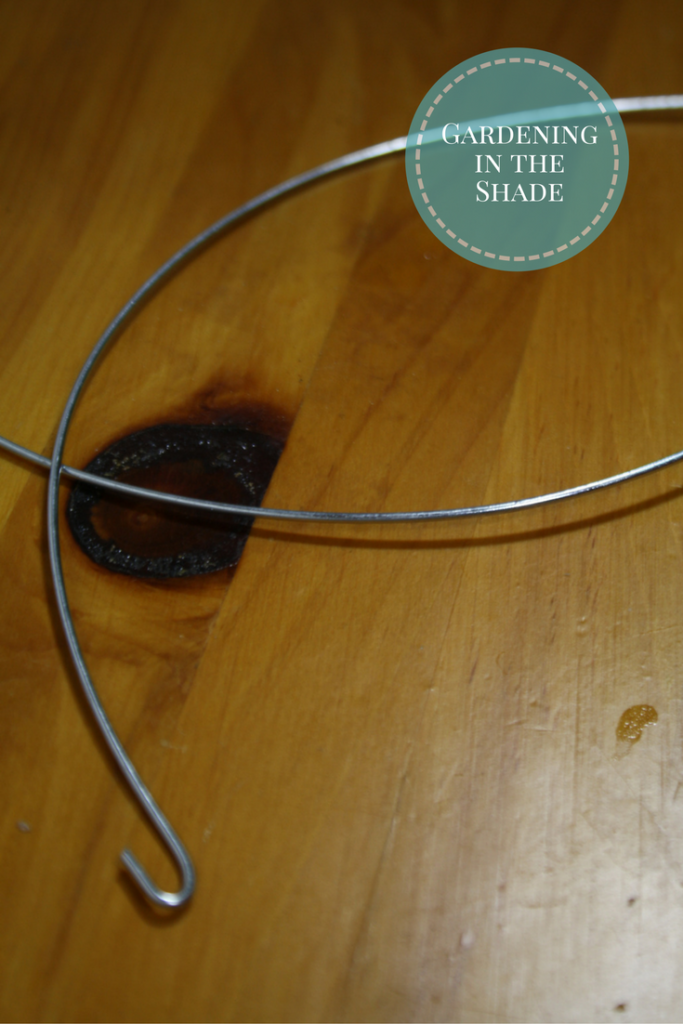
To make the dome of the shell, you will need 3 half circles of the heavier wire. Form a hook in each end.
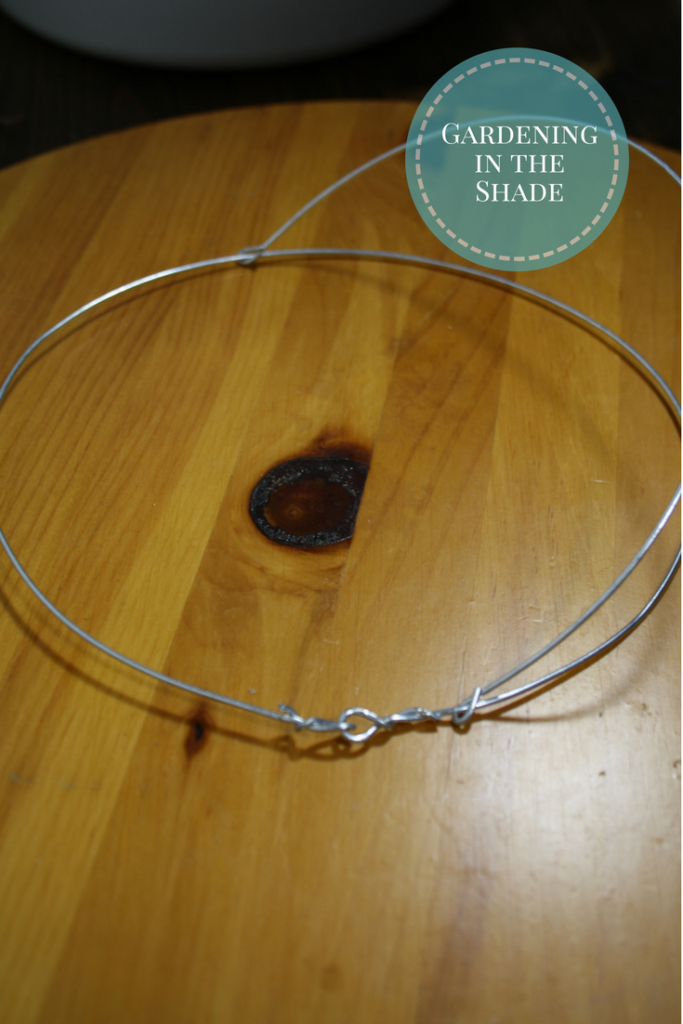
Use the hook to attach the half circle to your rim.
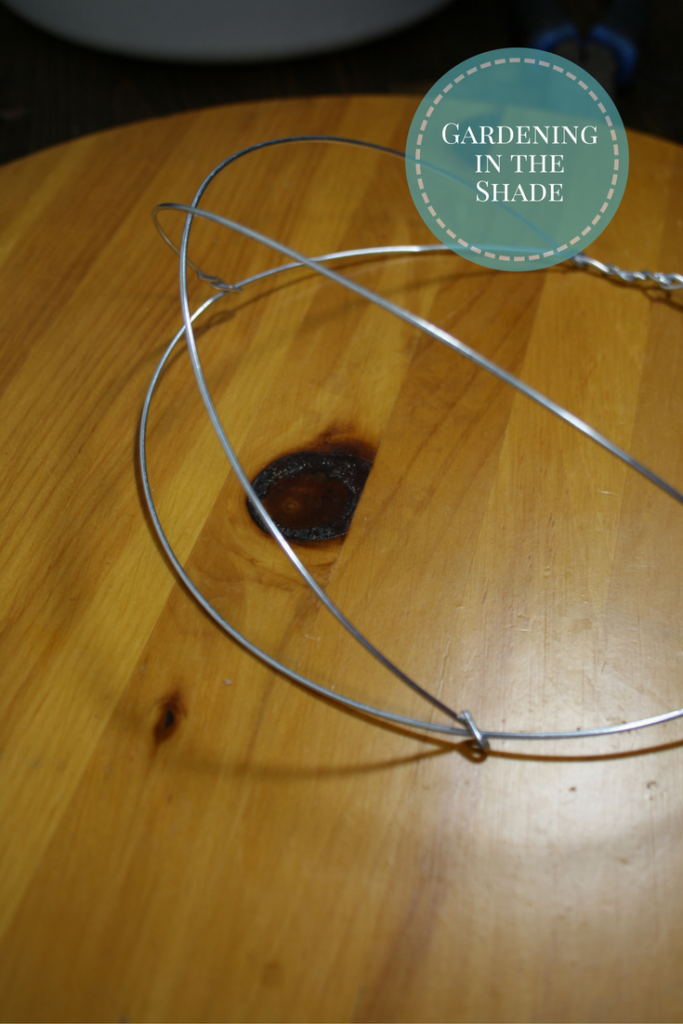
Repeat with the other two, arranging them around your rim so they intersect.
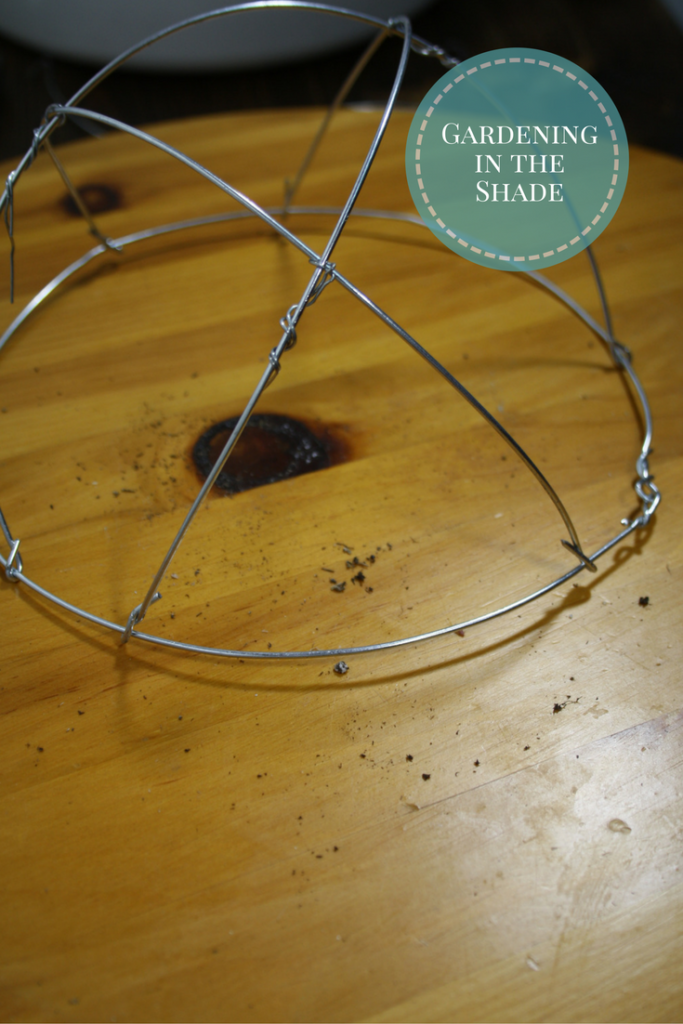
Where the wires of the shell intersect, tie them with some florist wire.
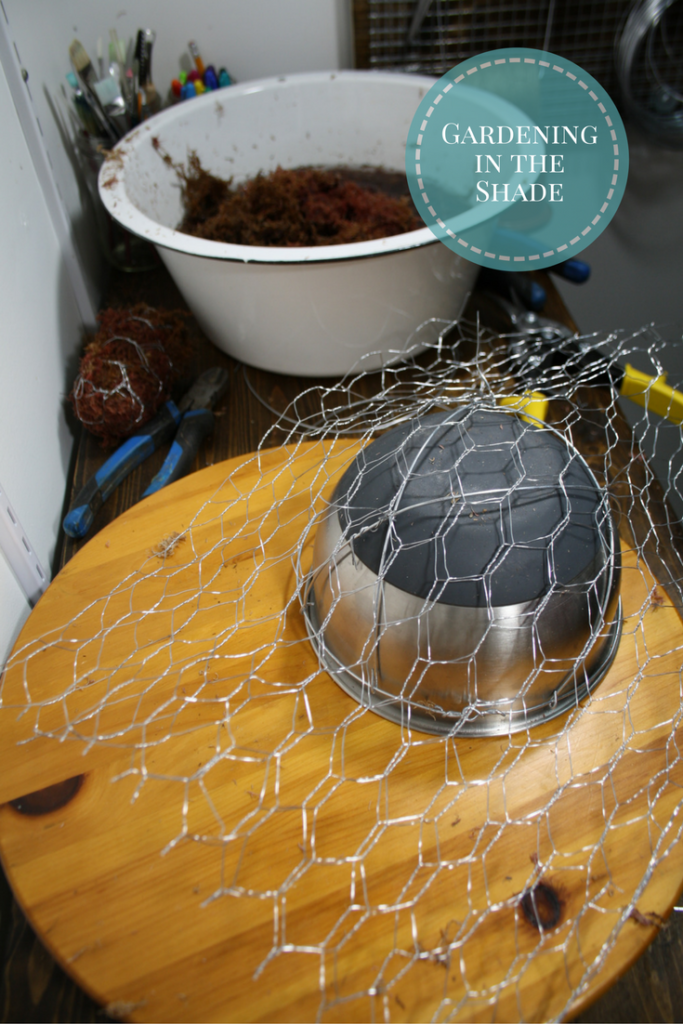
Lay a double layer of chicken wire over your frame. I used an inverted bowl to avoid flattening my shell.
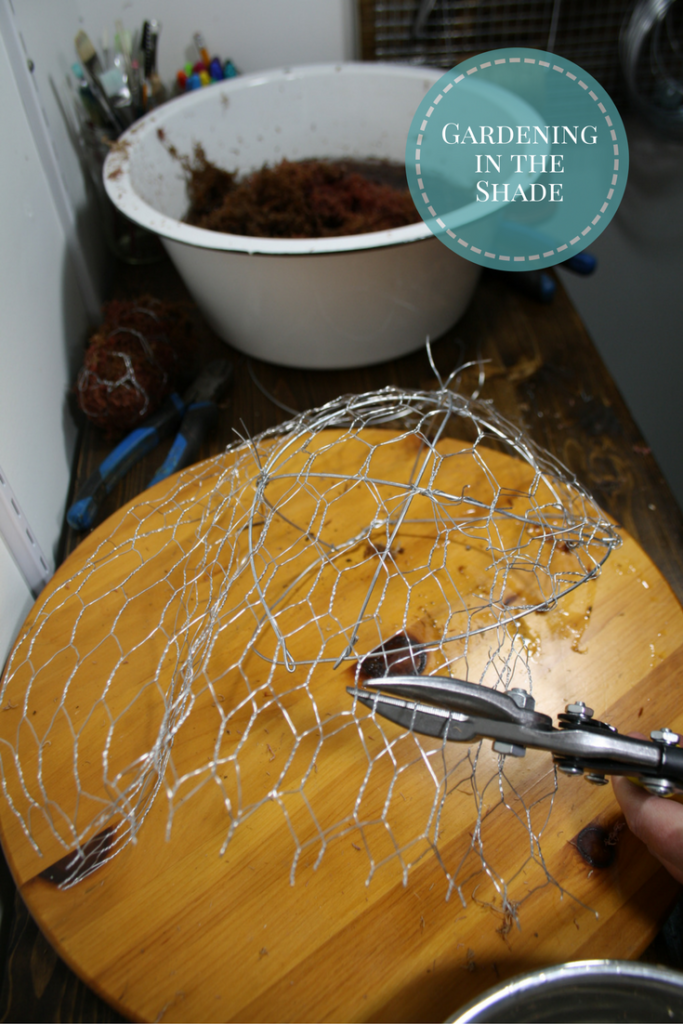
I’ve done this two ways before, you can either fill the shell with moss and fold over the wire to hold it in, or you can attach the mesh to the rim and use a second piece to hold your moss in. I get a tidier look with the second method, so trim away your excess.
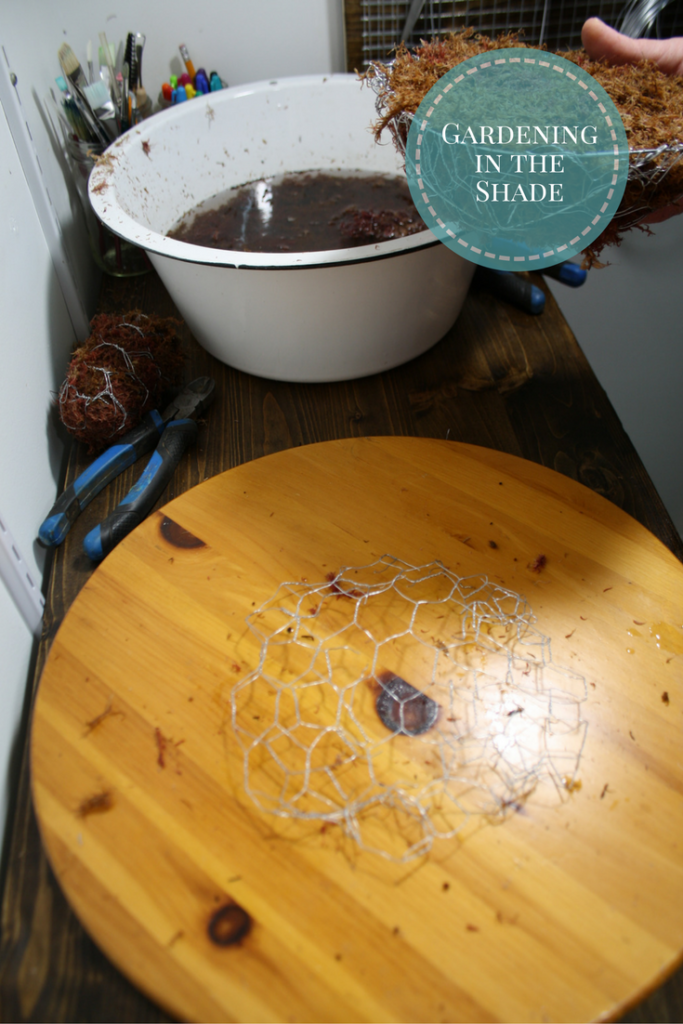
Fill the bowl of the shell with moss, squeezing out the water as you go. Use another piece of chicken wire to shape a lid – the belly of your shell.
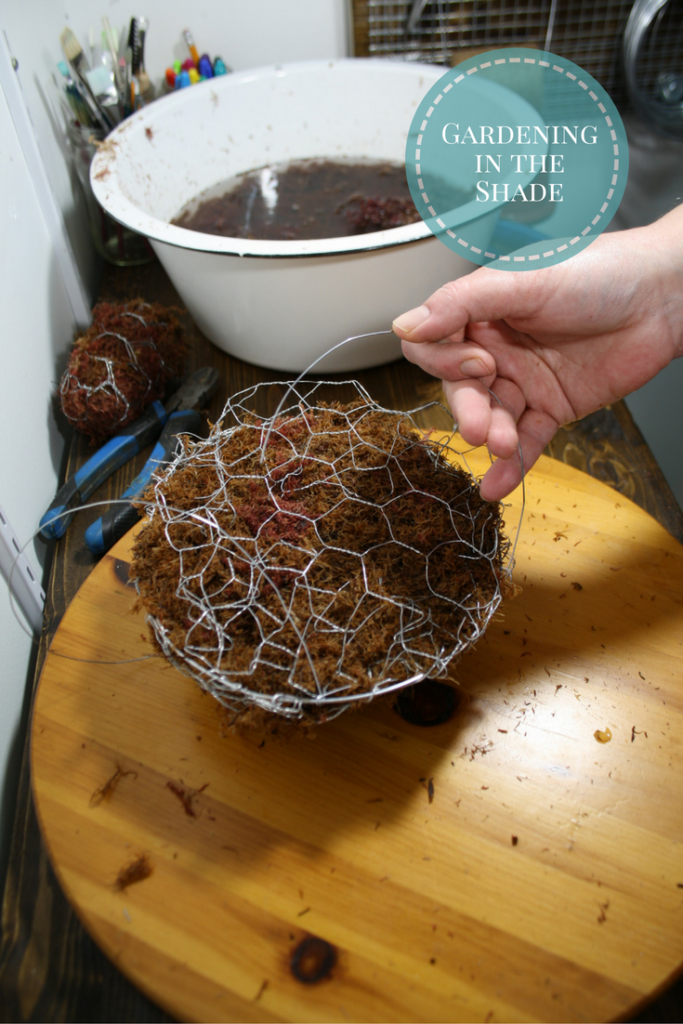
Use florist wire to ‘sew’ everything together.
For the head, tail and feet:
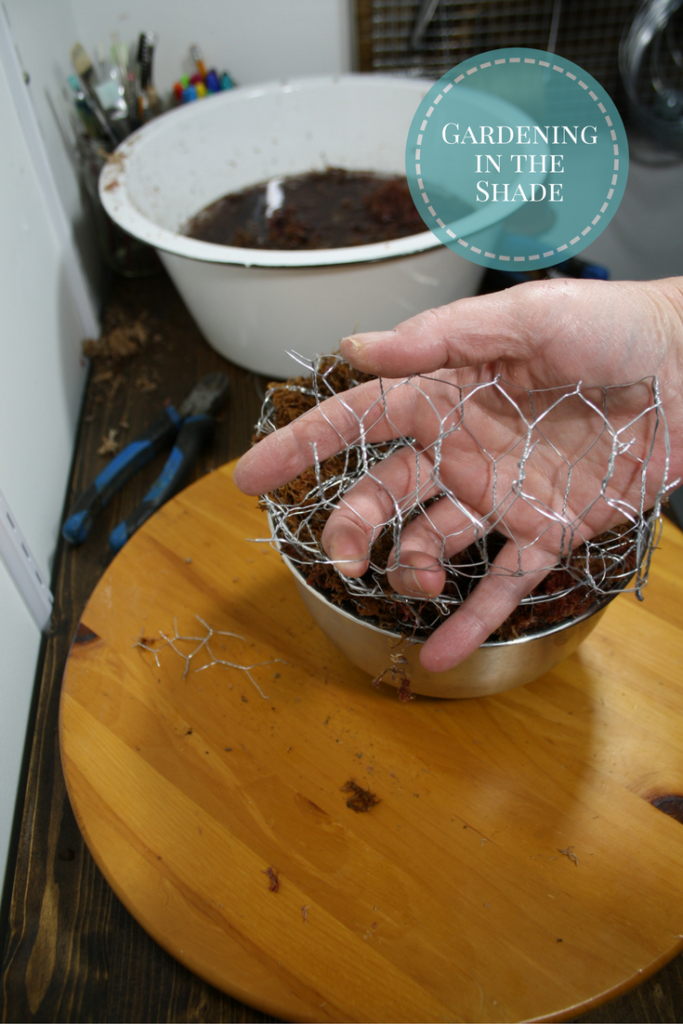
To make the head and neck, make a tube from chicken wire and close on end.
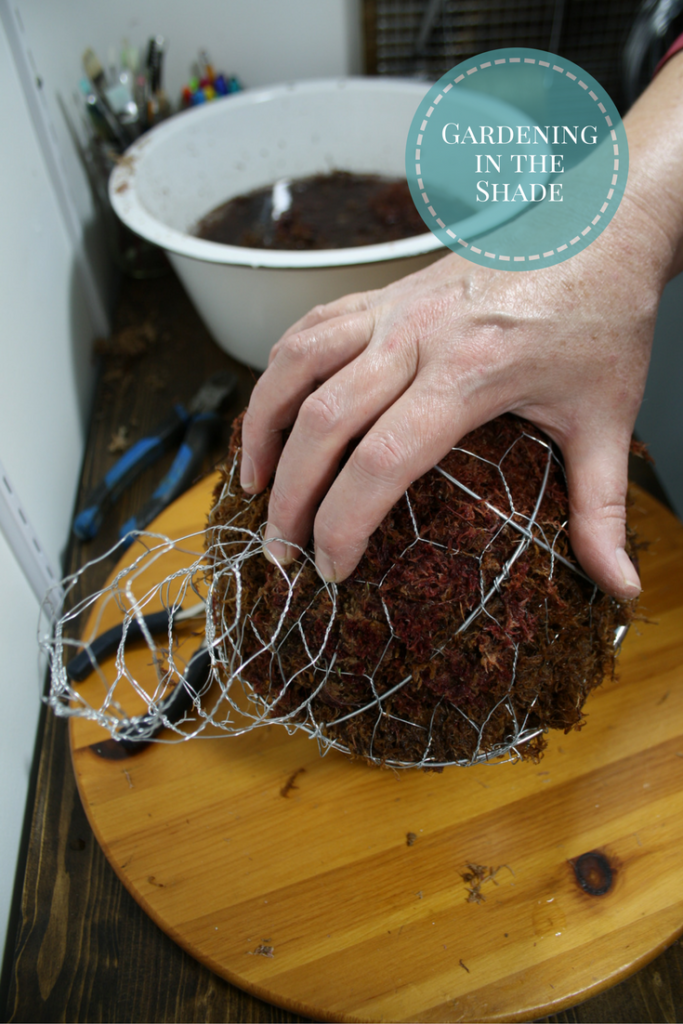
Test it against your turtle and adjust until you are happy with how it looks.
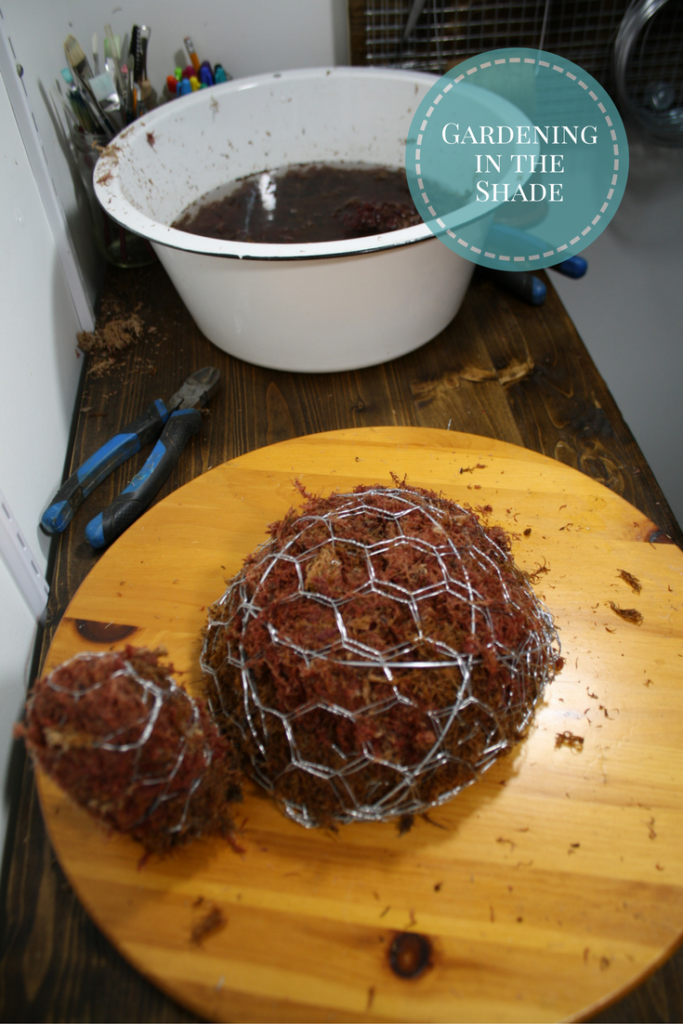
Fill the head with moss and set aside.
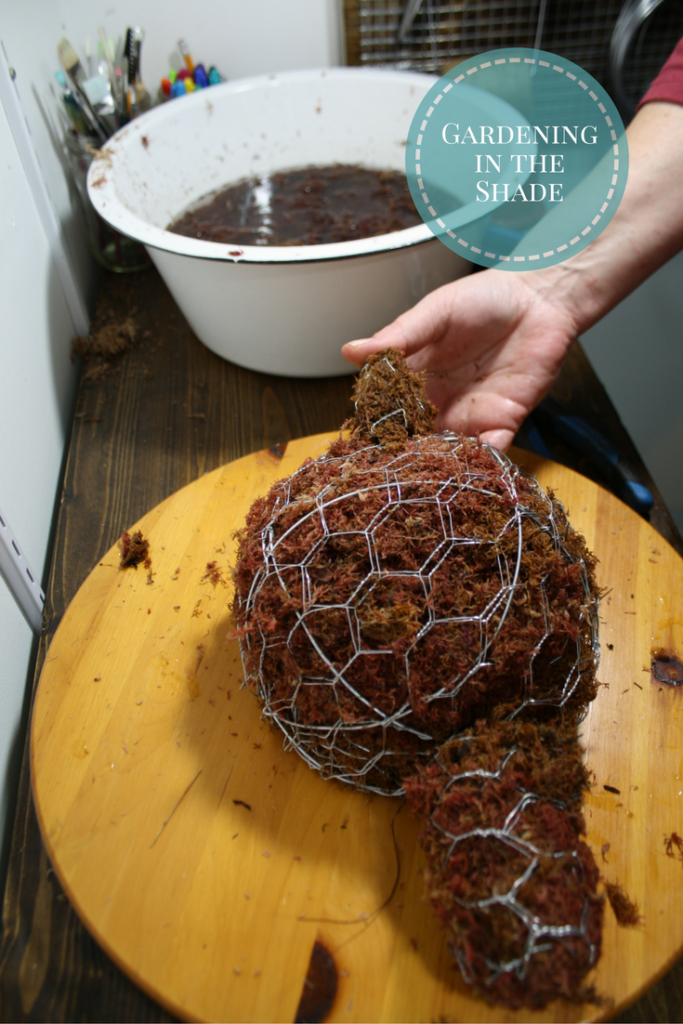
Shape and fill the tail. Everything is just chicken wire tubes with one end closed.
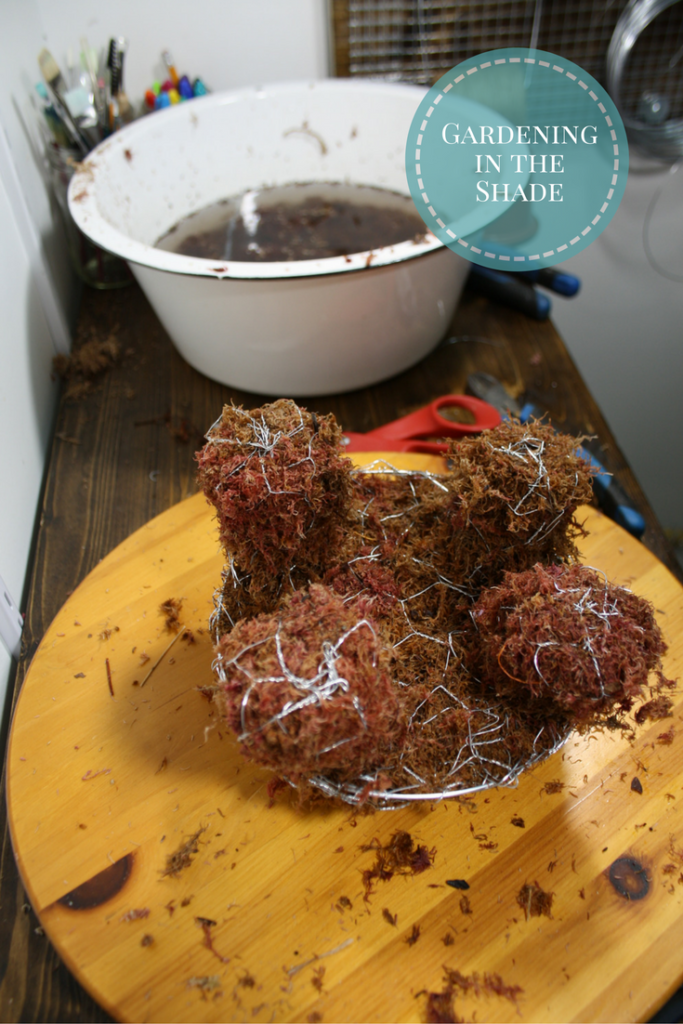
Shape the 4 feet. Stuff them firmly with the moss so they don’t collapse with the weight of the turtle. When you are positioning the feet, imagine the head is 12 o’clock, the tail pointing at 6. The front feet are at 10:30 and 1:30. The back feet are 5 & 6. Use florist wire to firmly attach the feet.
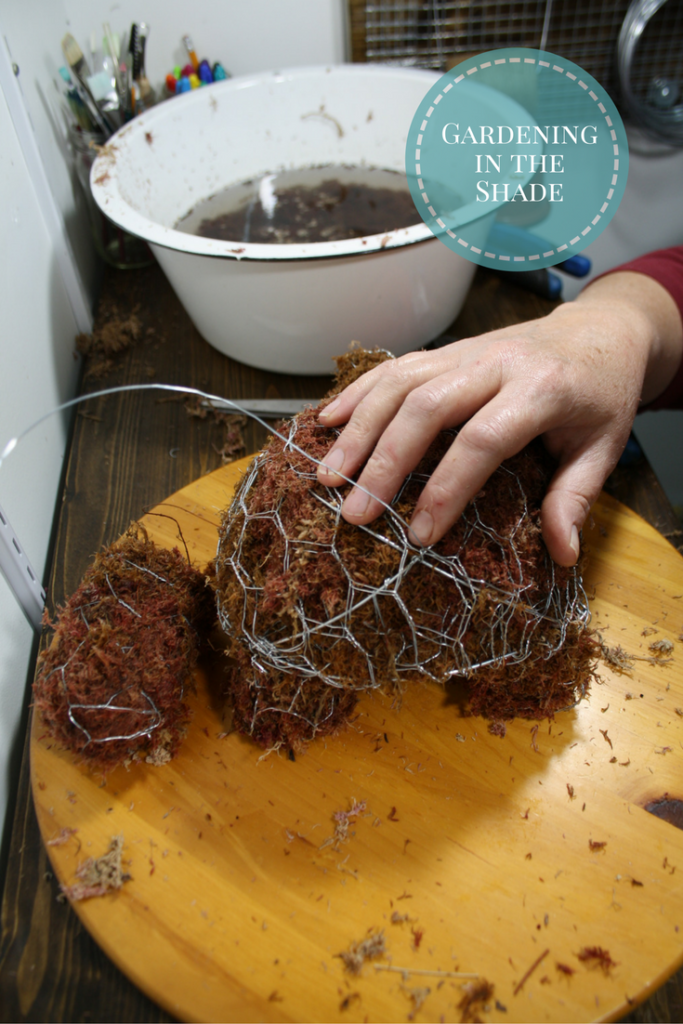
For the head, I like to have more than the chicken wire to attach it too. Here I chose a spot where the frame of the shell crosses.
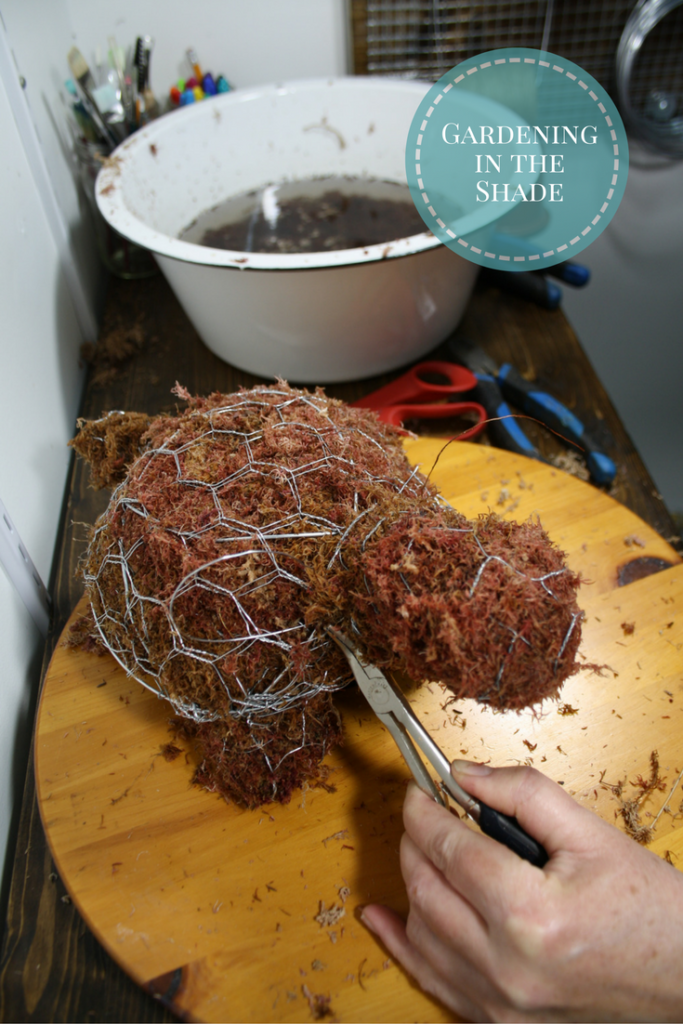
Attach the tail and the head with more florist wire. Make sure the head is well secured and not wobbly.
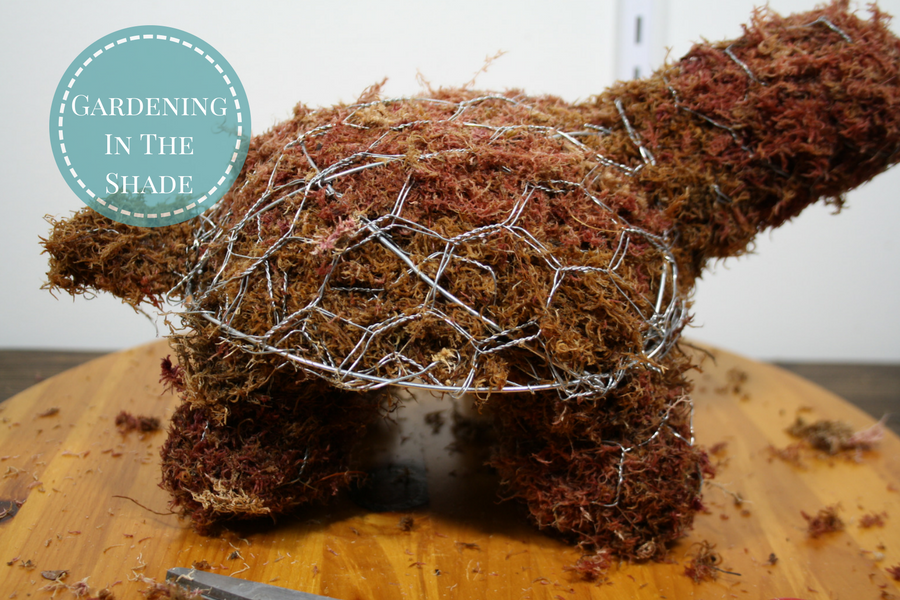
Your topiary frame is complete!
Planting your topiary.

I learned my lesson planting my bunny topiary. These small guys look best with just a few plants.
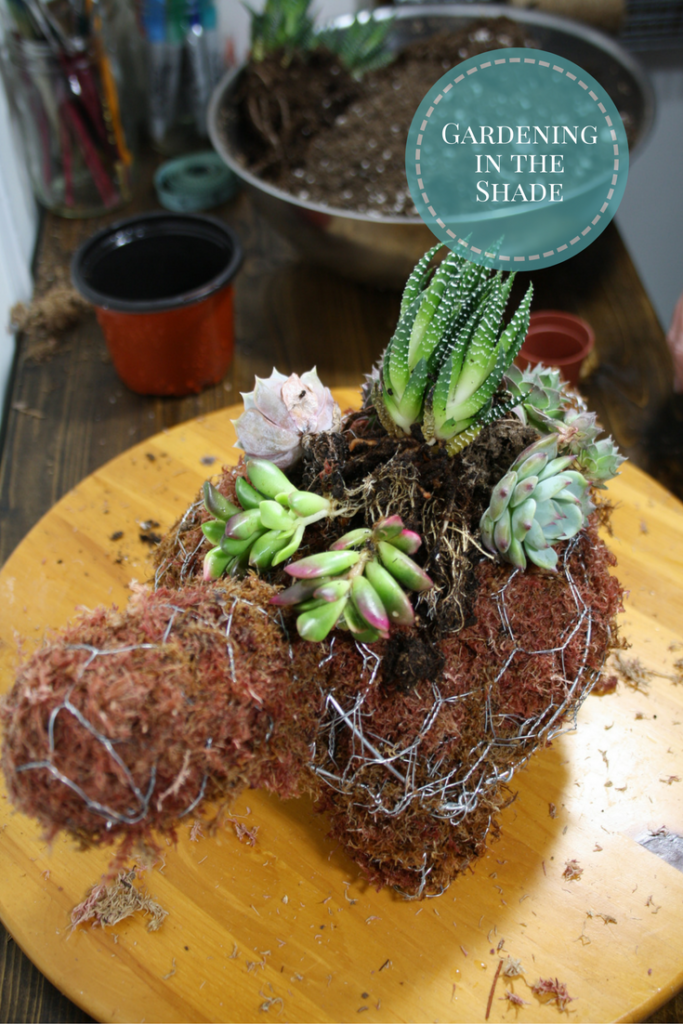
After removing as much of the soil as possible without damaging the roots, work out a pleasing arrangement.
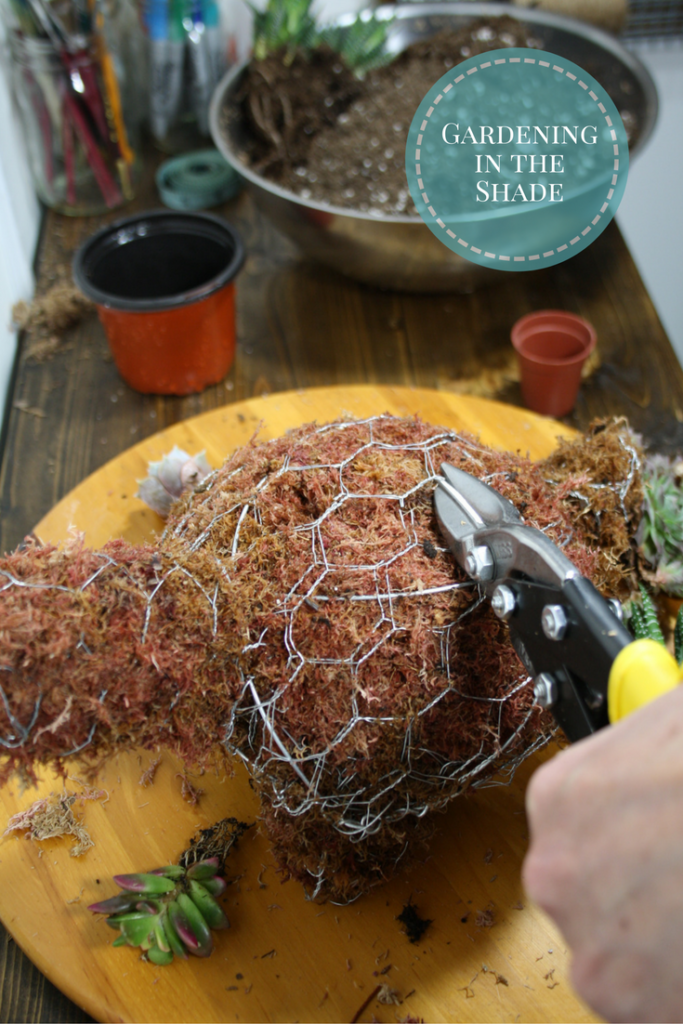
I used snips to remove a small section of the chicken wire so it would be easier to plant.
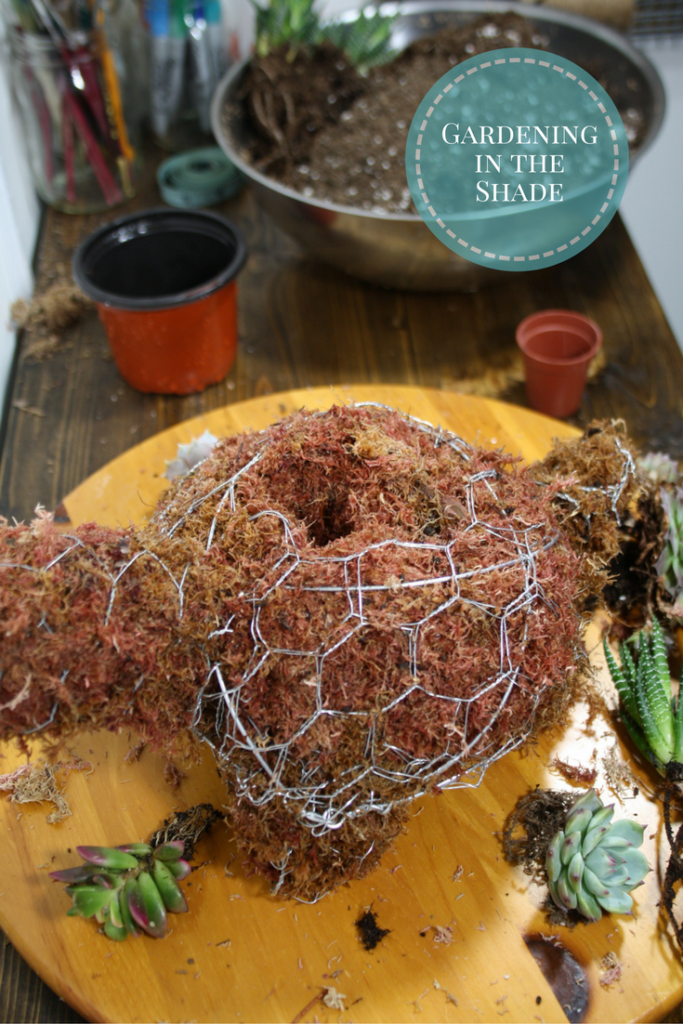
Use your fingers to make a hole in the moss.
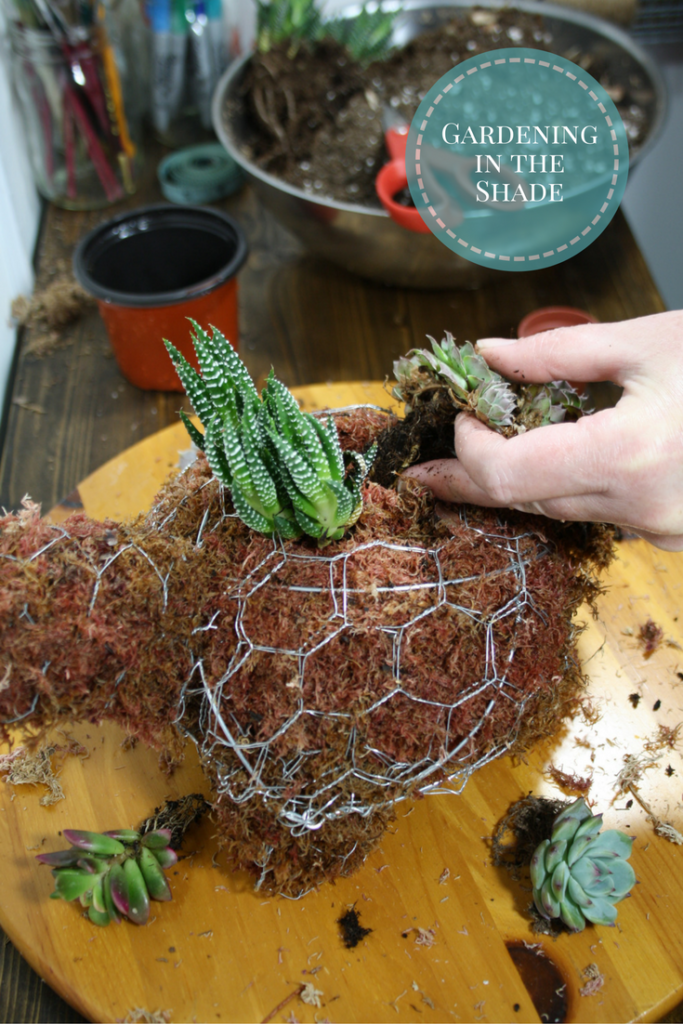
As you plant, use your fingers or a pencil to push the roots into the moss.
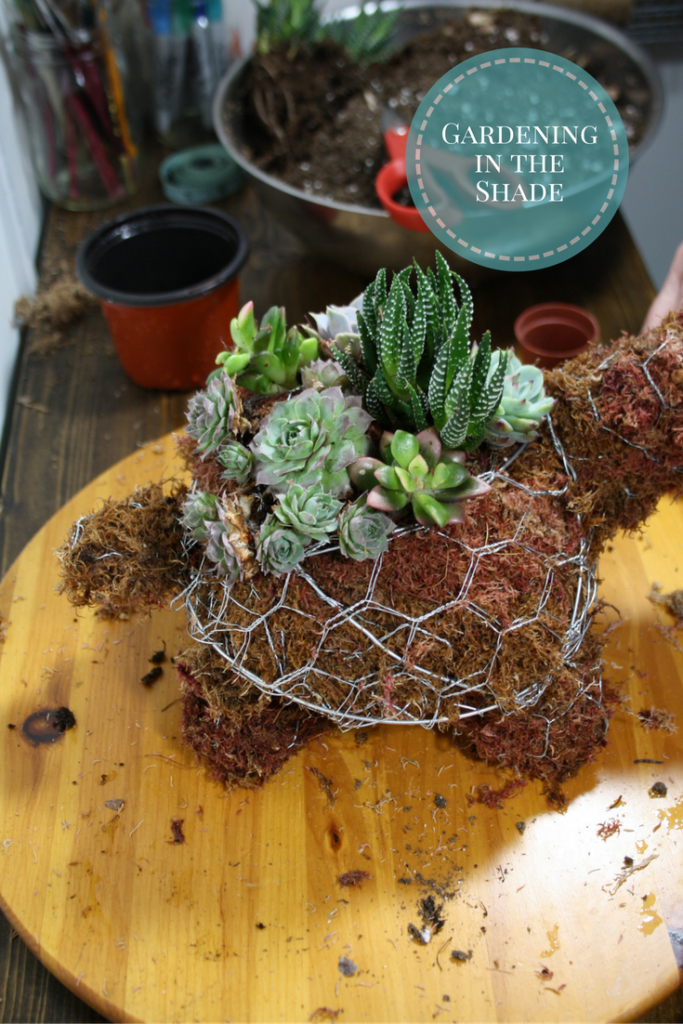
Sticking with my less is more mantra, this turtle is finished.
Photo shoot!
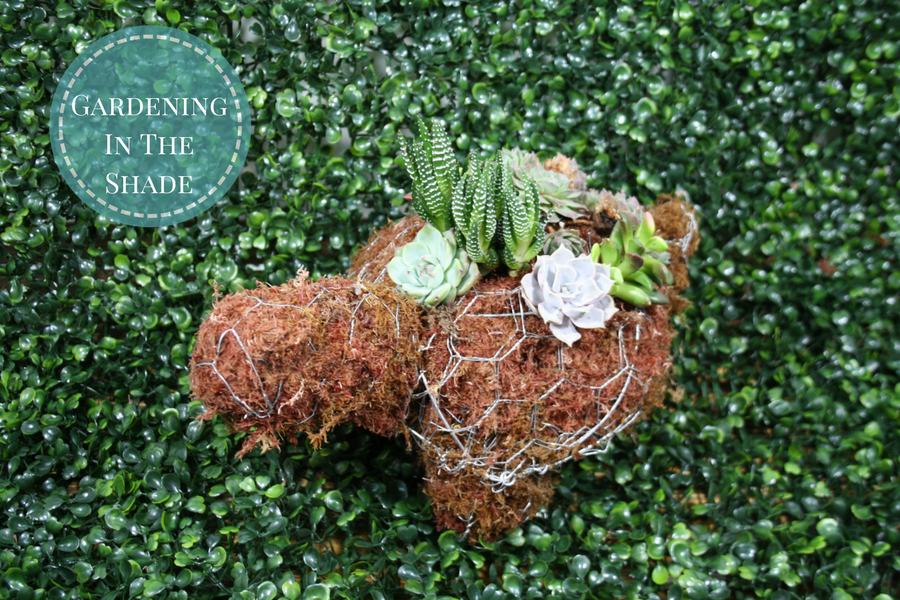
One of the best parts about my new crafting space is the lighting for pictures is so much better!
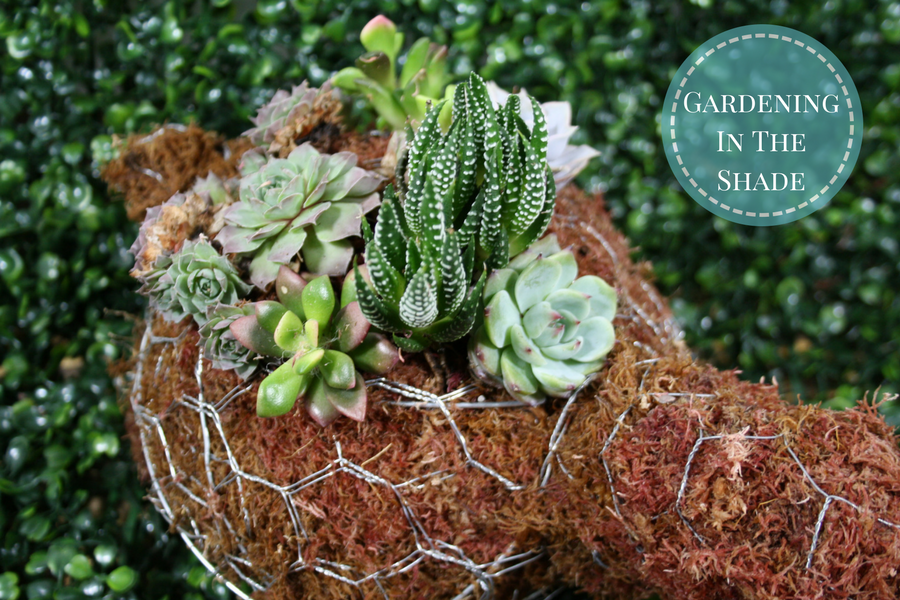
The two clamp on lights of the shelf above with the LED floods are perfect for getting well-lit pictures in my house.
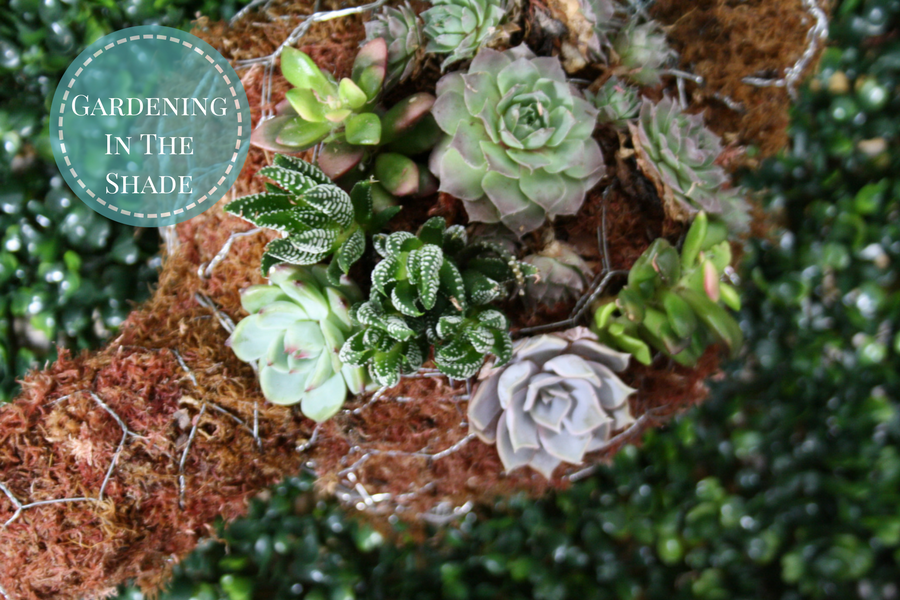
The greenery underneath is fake boxwood ’tiles’ from the dollar store! Perfect for a mini turtle’s début!
If you enjoyed this project, please share it on Pinterest. Let me know in the comments if you make or plan to make one of your own!
If you enjoyed this post, don’t forget to share it with your friends!
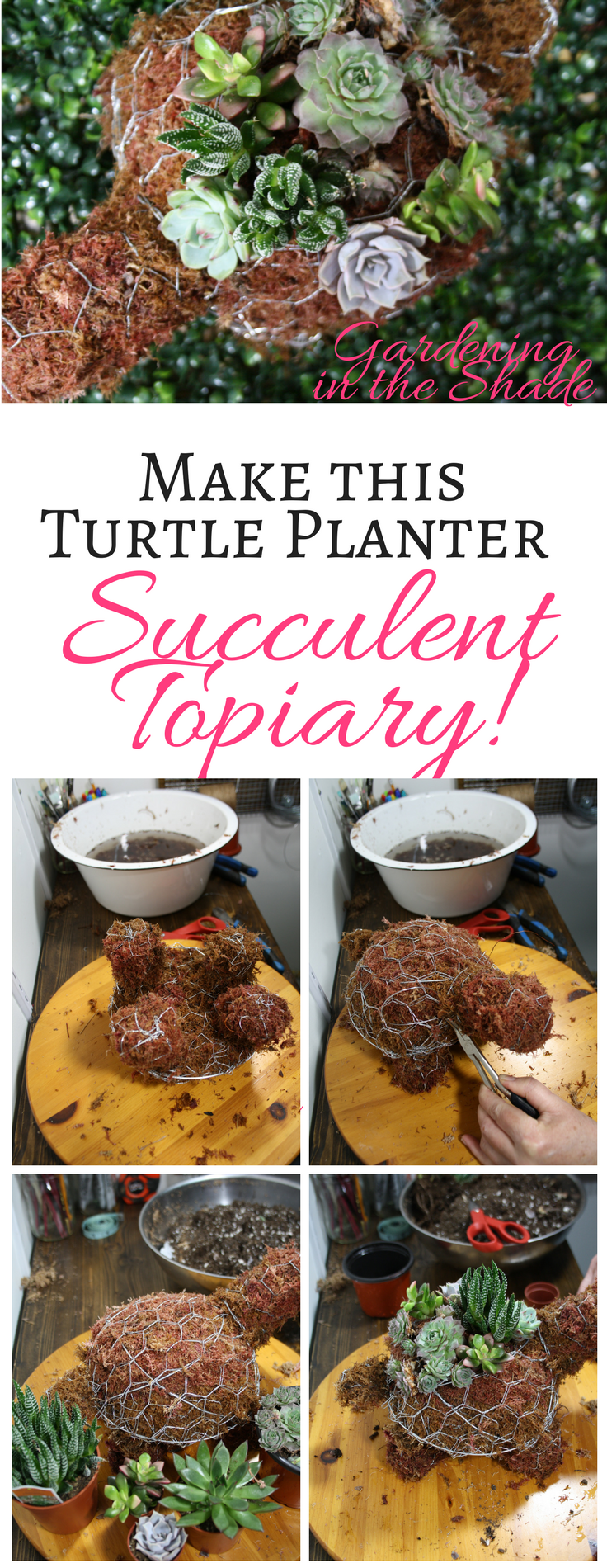 For more just like it follow me on Pinterest, Facebook and Twitter or sign up for regular updates by email.
For more just like it follow me on Pinterest, Facebook and Twitter or sign up for regular updates by email.
If you have ever thought about starting a garden or craft blog of your own see how easy it is >>here<<.


AWESOME. Now, if can you figure out a nautical theme, like a boat, I’d love that? It needs to be about 3-4′ high. I’ll send you instructions if I formulate an idea.
Has anybody done this in colder climates? How do you care for them in the winter?
For the mini-turtle it is small enough to bring indoors and set on a saucer. That just leaves the usual challenges of trying to keep succulents looking nice in low-light. Also there is no rule that says you must plant it with succulents! I have one I planted with mini African violets and I like it just as much. I also plan to make one of the larger turtles with mini-Hosta and see how that goes.
These turtles look great but, wondering why you didn’t get smaller clay pots for the smaller one and stick to your original design.
You probably could do exactly that and I would love to see how it turns out! Two or 2 1/2 inch pots would probably be just right for the smaller turtle.
I live in a smaller community with limited retailers and I kind of hate shopping to begin with, so you will notice many of my projects and crafts reflect that.
You know how much I love your topiaries! Especially turtles..LOL I have the perfect place picked out for a turtle or two…eventually I will actually make it! Pinned and shared 🙂
Thanks Wendi! This little guy looks adorable basking in my window, and I’m sure he would look fantastic at your place too! If it weren’t so hard to ship plants internationally, I’d box one up and send it to you.
This is so awesome and too cute! I’ve only recently purchased my 1st succulent and obviously I need more 😉 Your photos are absolutely gorgeous too! Pinning & sharing
Thank you Angie! I’m really happy with how it turned out, I think it’s my favorite so far.
Will the succulents fill in or is it wise to buy more if I want to have a more “green” turtle? Thanks
Hens & chicks will spread out but most of them would either take a very long time to spread, or get taller/longer instead. I would suggest you use more plants or use the green moss if you want a more filled in look to your shell.
That’s so flipping adorable! You did a great job and gave a great tutorial too.
Thank you so much!